
Welcome to Week 2!
We hope you are enjoying the journey so far! Life can be busy, so this week we’re featuring six 30-minute recipes. At the end of the week, you’ll be halfway through — don’t forget to save your favourites! As your confidence grows, invite friends and family to join the heart-healthy cooking challenge.
Your weekly goals
- Discover what a heart-healthy eating plate looks like.
- Eat heart-healthy throughout the day — think about meal prepping your breakfast or lunch in advance to make it easier! View our video examples below.
- Keep pantry basics well-stocked — follow our Budget Friendly ingredients guide for a heart-healthy pantry, fridge and freezer.
So what's for dinner?
Massaman beef stir-fry
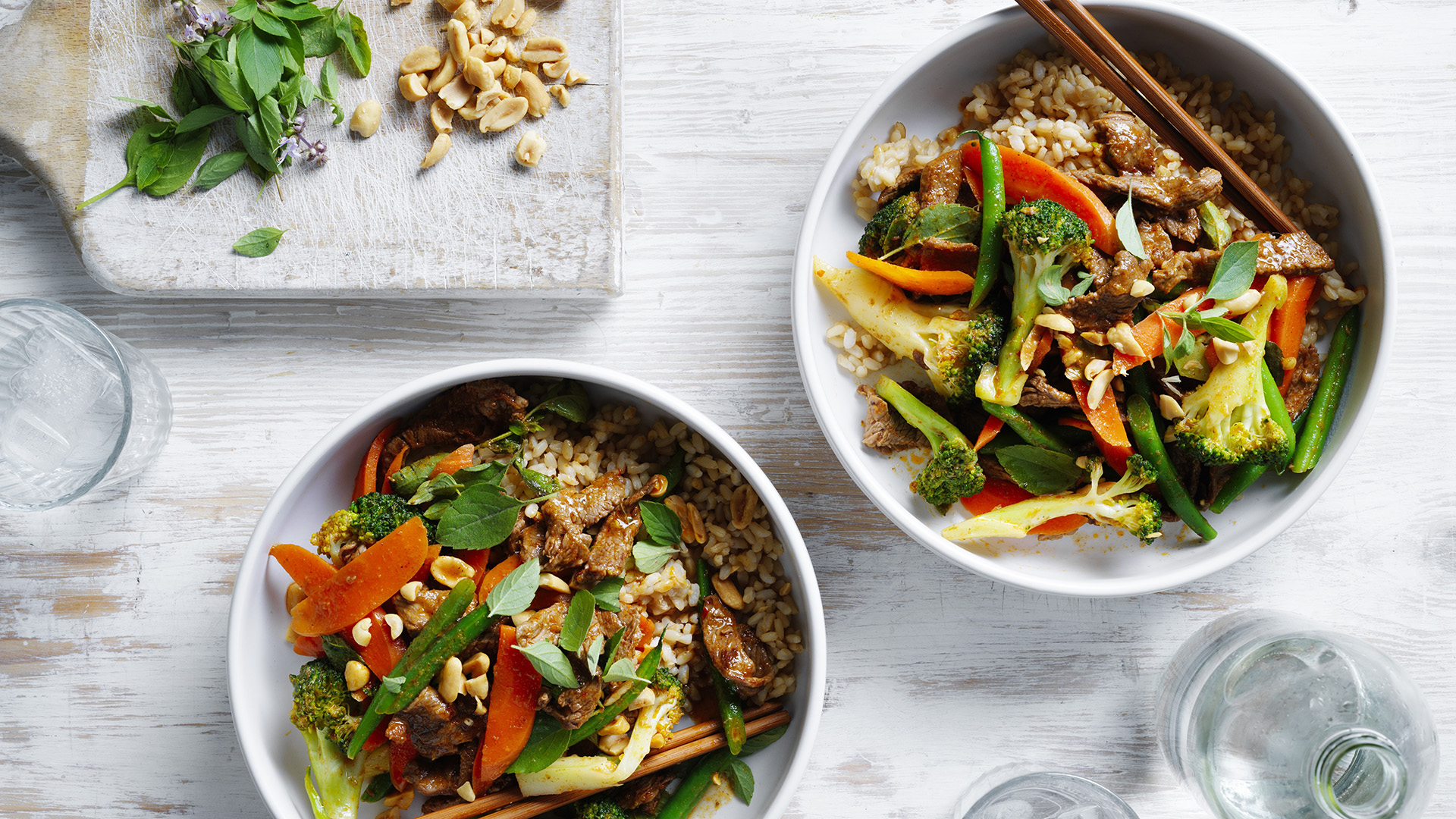
Recipe highlights
- Easy step-by-step recipe to help guide you to recipe success.
- Partially freezing the rump steak makes it easier to slice thinly for quick-cooking, tender results.
- Using pre-made paste minimises prep time. Keep to the recommended quantity, check labels, and choose the one lowest in sodium per 100g.
Easy chicken nasi goreng
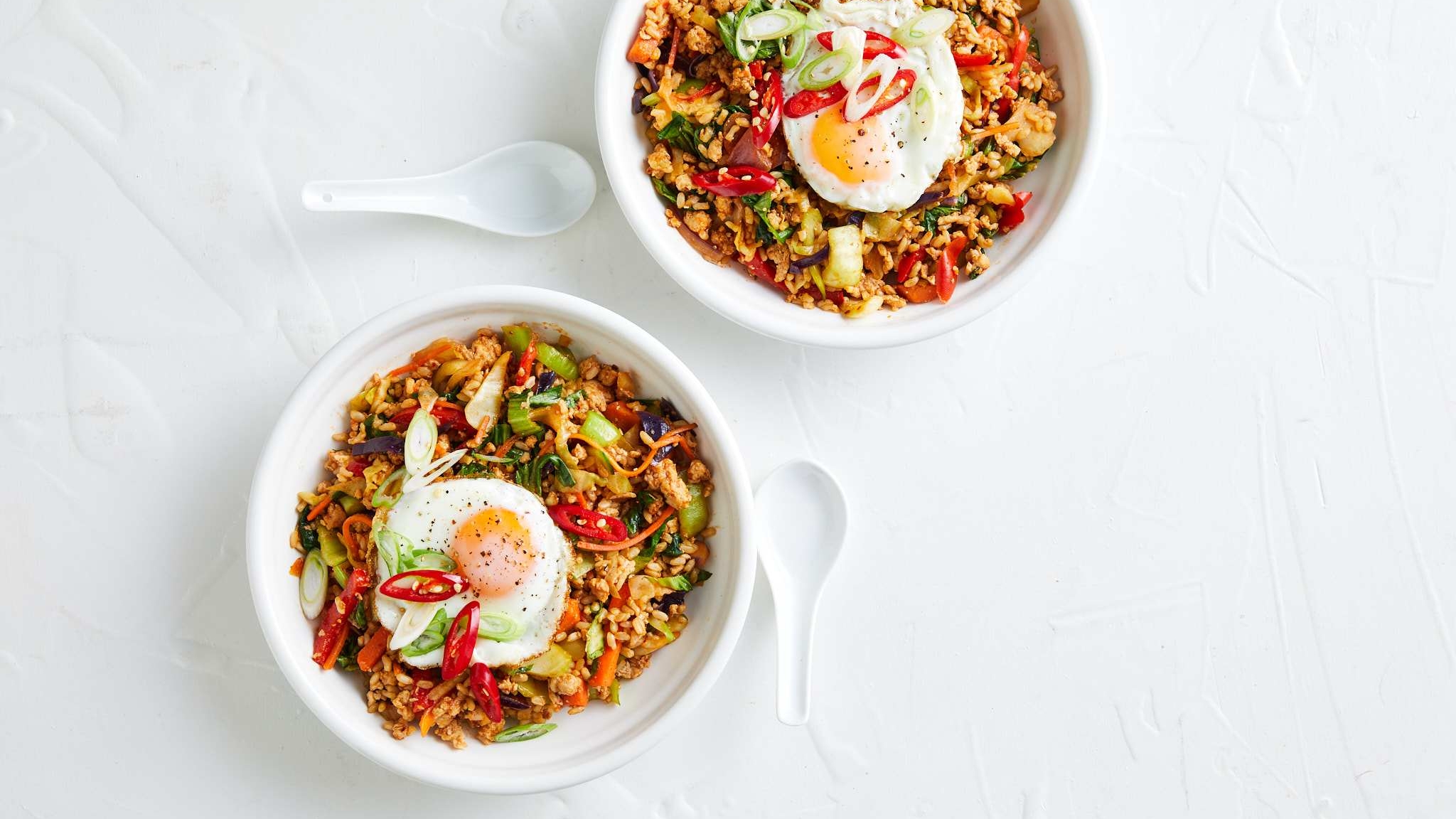
Recipe highlights
- Microwavable brown rice is a quick and easy way to add wholegrains to a dish, especially when you’re short on time.
- Using reduced-salt soy sauce and low-sodium Thai chilli jam helps reduce overall sodium content, making this dish a healthier option than traditional takeaway versions.
- The fresh vegetable stir-fry mix and bok choy make it easy to boost your vegetable intake. This dish also works well with a frozen vegetable stir fry mix or 400g of any chopped fresh vegetables you have available.
Lamb souvlaki wraps
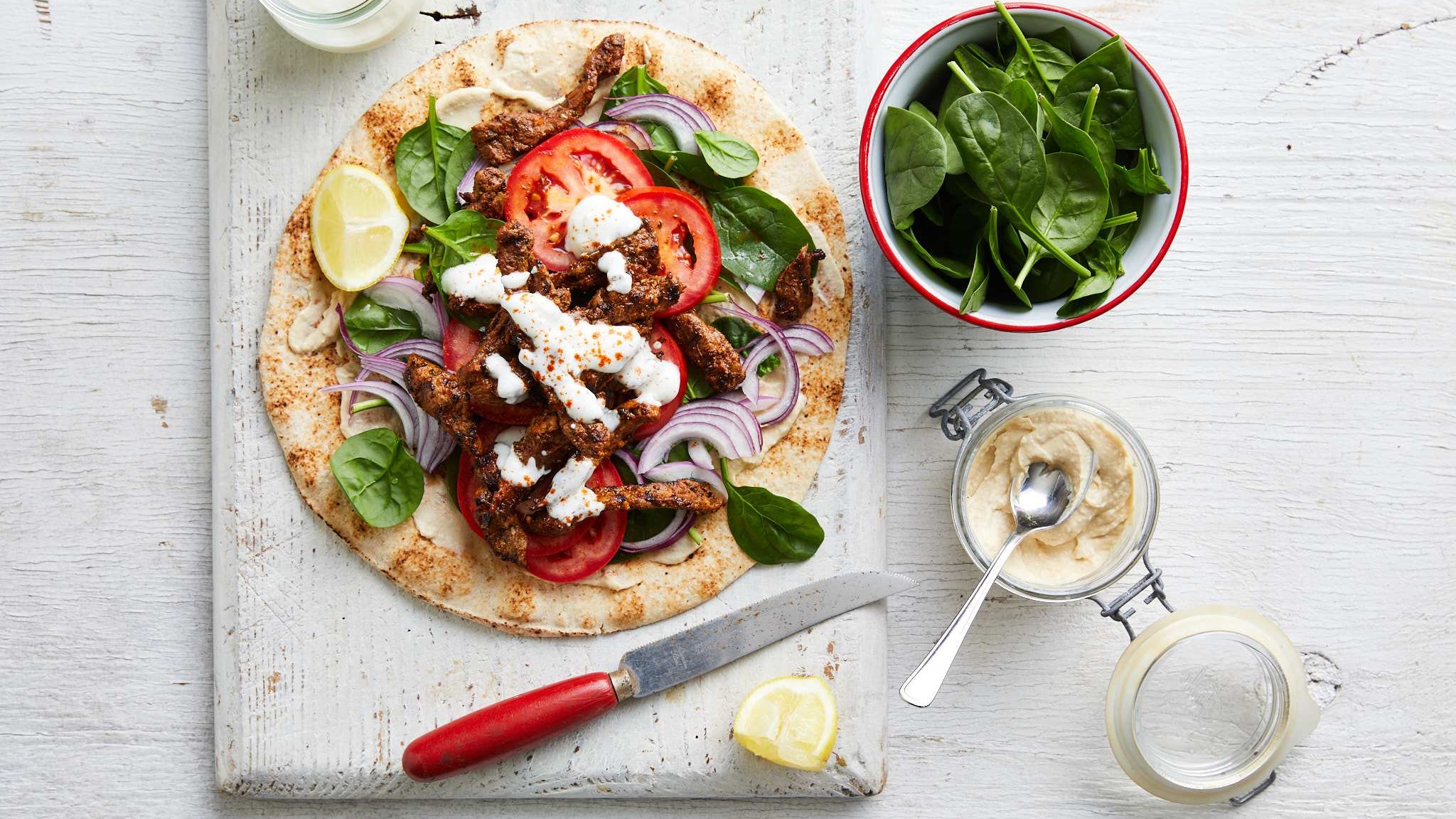
Recipe highlights
- Check labels on hummus and choose the brand lowest in sodium per 100g.
- We’ve used reduced fat Greek yoghurt and a squeeze of lemon juice to add creaminess and extra flavour.
- Lamb can be replaced with tofu if preferred.
- Boost veggies by adding any leftover roast vegetables like pumpkin.
Taco chicken bowls

Recipe highlights
- Fresh herbs, chilli powder, and no-added-salt ingredients enhance flavour while keeping sodium levels lower.
- Mexican chilli powder is a blend of paprika, chilli, cumin, oregano, pepper and garlic. It’s less spicy than regular chilli powder.
- Replace brown rice and ancient grains with any microwaveable wholegrain rice blend or substitute with ¾ cup cooked brown rice.
- You’ll need ½ x 400g can black beans and ½ x 400g can chopped tomatoes for this recipe. Refrigerate remaining beans and tomatoes for use in casseroles, curries, bolognese sauce or to a make a filling for wholegrain tortillas.
Salmon primavera spaghetti
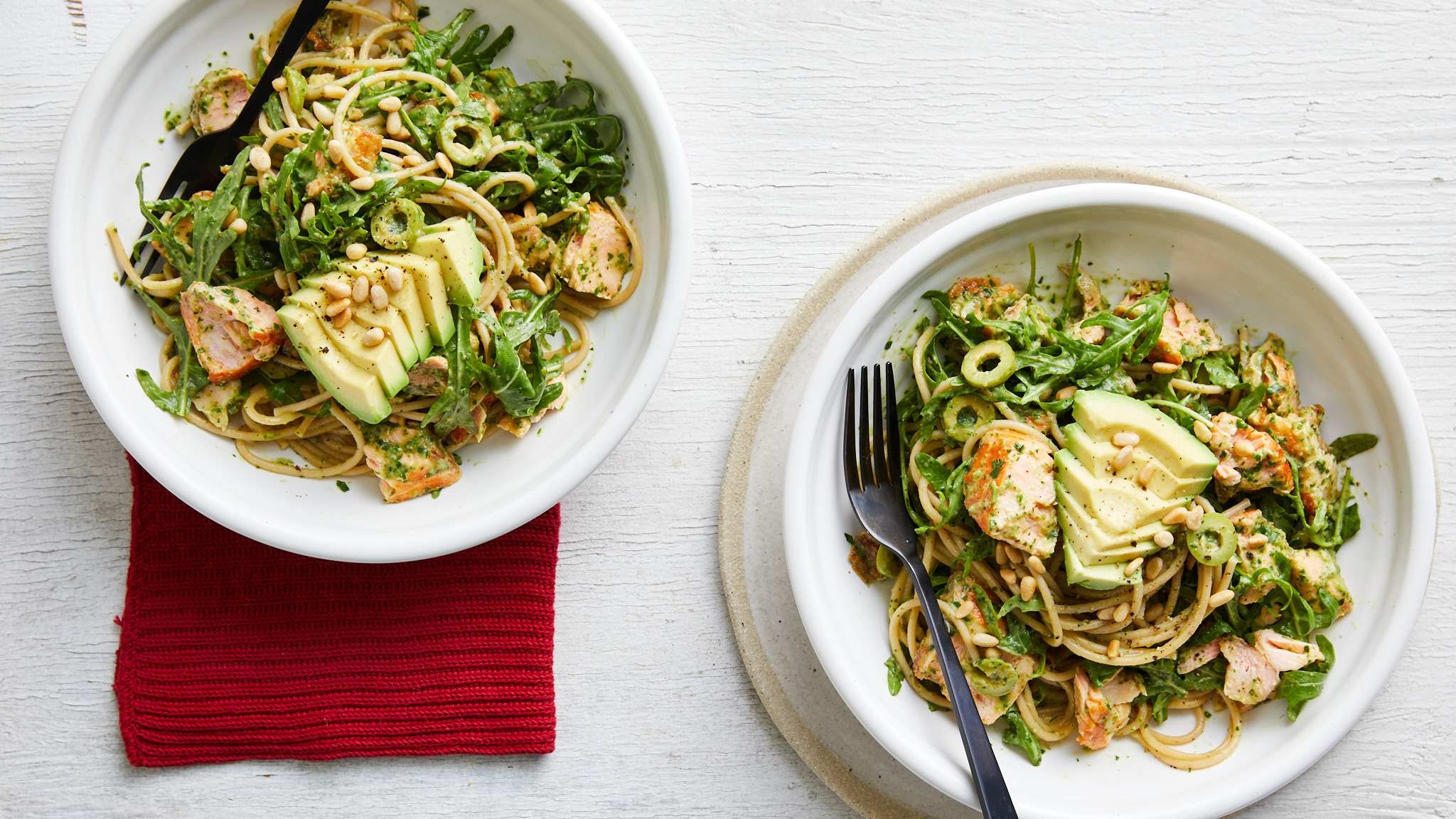
Recipe highlights
- Combines a great balance of lean protein, healthy fats, wholegrains, and fresh greens for a delicious meal.
- Salmon provides heart-healthy omega-3, plus avocado and olive oil contribute healthy monounsaturated fats; promoting heart health as well as giving a creamy texture to this dish.
- Wholemeal spaghetti helps boost your wholegrain intake and offers more fibre than refined pasta.
- Boost flavour with parsley, rocket leaves and lemon juice instead of adding salt.
Turmeric, ginger and lentil soup
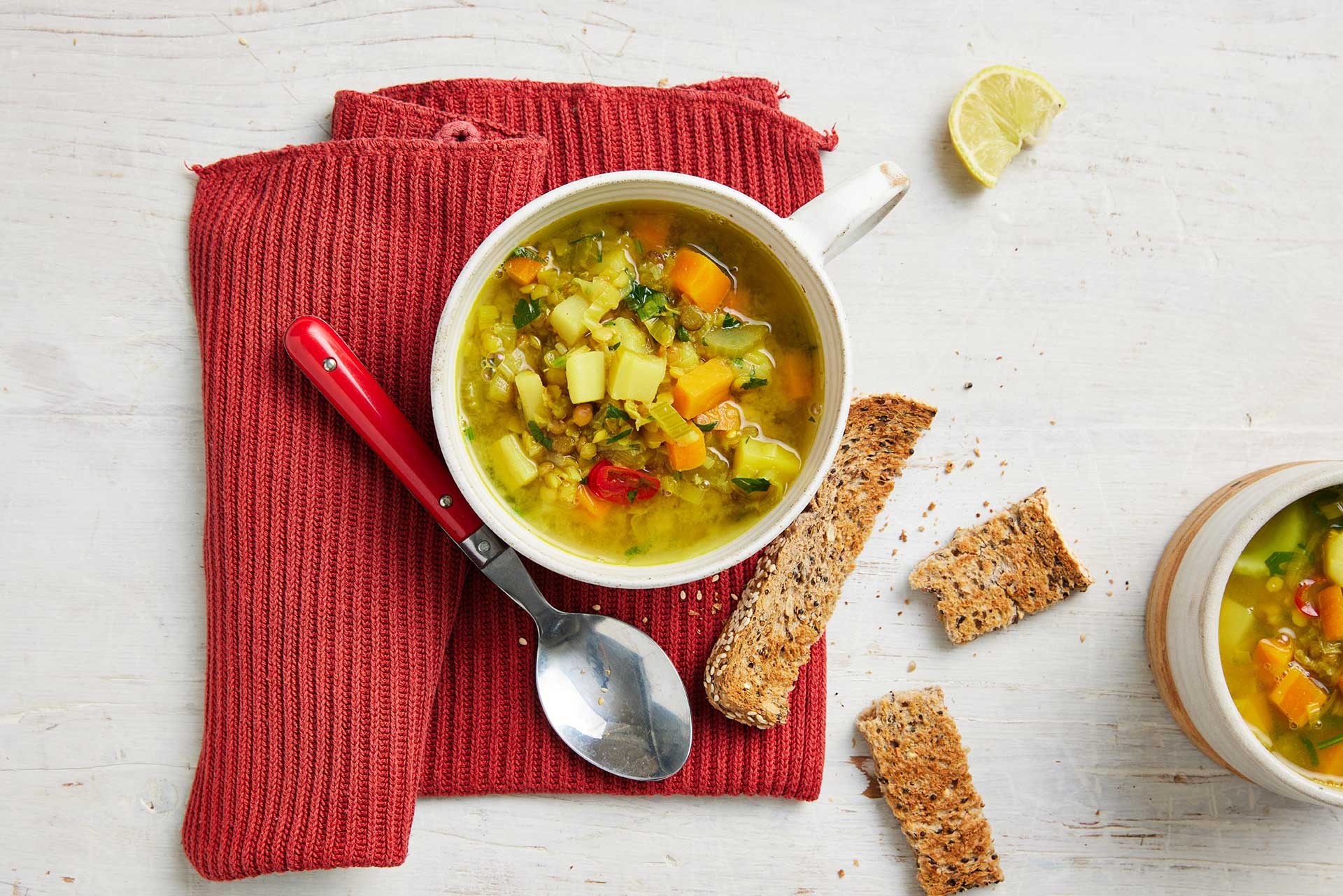
Recipe highlights
- Soups are a budget-friendly, one-pot meal, allowing you to use up available ingredients like vegetables, grains, or heart-healthy proteins such as legumes (lentils, chickpeas) or chicken.
- This plant-based soup is ideal to make ahead as the flavour improves over time. Freeze in serve size portions for an easy, time-saving, ready meal option.
- If preferred, replace ground turmeric with a 2cm piece of peeled and finely grated fresh turmeric root.
- Lentil soup mix is high in protein and fibre, and like all legumes, can help reduce cholesterol and blood pressure.
Tex Mex chicken burgers
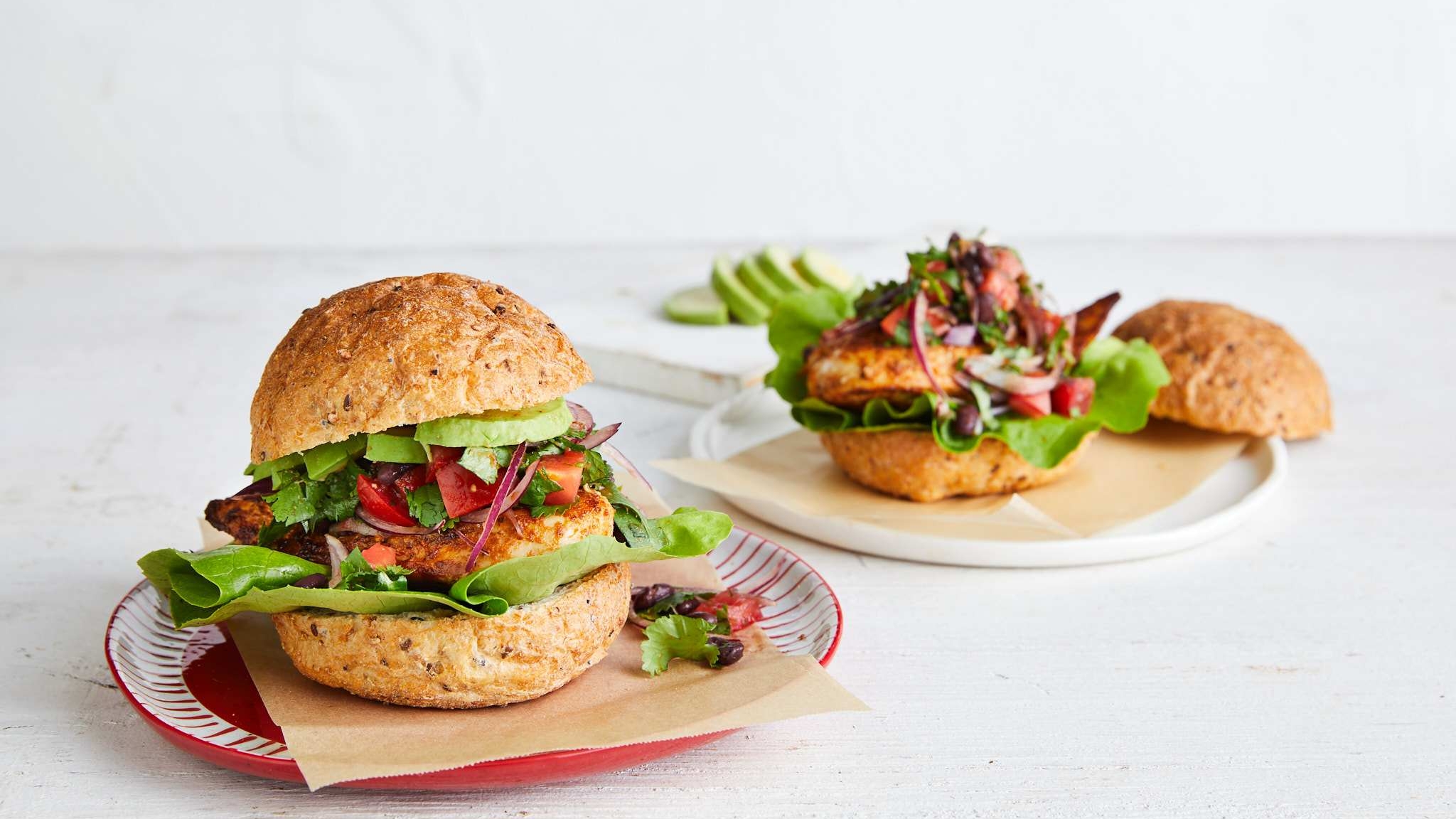
Recipe highlights
- This recipe offers a flavourful and healthy take on the classic burger.
- Olive oil and avocado add healthy monounsaturated fats, which are beneficial for heart health.
- Using black beans and a wholegrain bread roll provide added fibre, helping to slow down digestion and create a more satisfying meal.
- No-added-salt canned black beans and salsa helps reduce the meal's sodium levels.
Plate portions — getting the balance right
View our heart-healthy eating plate examples to help you get the right balance of foods and nutrients in your meals.
Grab and go overnight oats
Short on time for breakfast in the morning? Plan the night before — try our quick grab and go overnight oats with only 10 minutes to prep!
Meal prep-lunch box
Save time and money by prepping lunch the night before. Just store in the fridge and pack in a chiller bag!
Heart-healthy eating plate
To help get a balance of foods and nutrients in your meals, aim to:
- Fill half of your plate with vegetables or salad,
- A quarter of your plate with protein foods (about the size of the palm of your hand), and
- A quarter of your plate with carbohydrate foods like potatoes, corn and wholegrains (such as brown rice, wholemeal pasta, grainy bread and oats).
- Don’t forget healthy fats like olive oil which can be used in cooking or as a dressing.

This week's healthy eating tips
Set yourself up for success in the kitchen!
Plan: stock your kitchen for heart-healthy meals
- Keep kitchen pantry basics well-stocked. Building a heart-healthy kitchen doesn’t need to be expensive or complicated.
- Stocking versatile, budget-friendly staples like canned and frozen fruits and vegetables, wholegrains and proteins can make it easier to put together simple, affordable, and heart-healthy meals.
- See our resources below.
Read labels: choose the best options for your heart
- Almost all packaged foods have a nutrition information panel (NIP) and ingredient list.
- This information is helpful to compare similar foods, so you can choose the best option for your heart health.
- Use our Reading food labels guide to find out more tips on what to look for to make heart-healthy choices.
Food prep: make healthy meals easier and faster
- Think about prep ahead of time e.g., make extra pasta sauce, and freeze into usable sizes ready to defrost for quick mid-week meals on busy nights.
- Reduce prep time — use no-added-salt canned vegetables and legumes (like lentils, chickpeas).